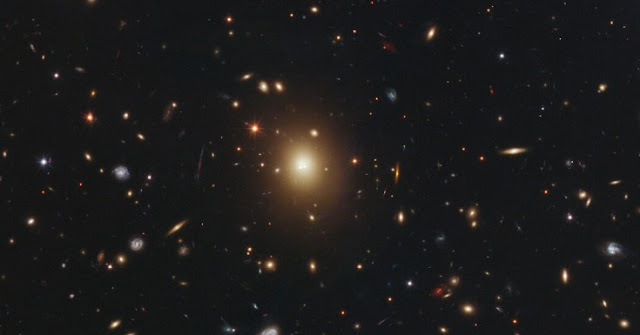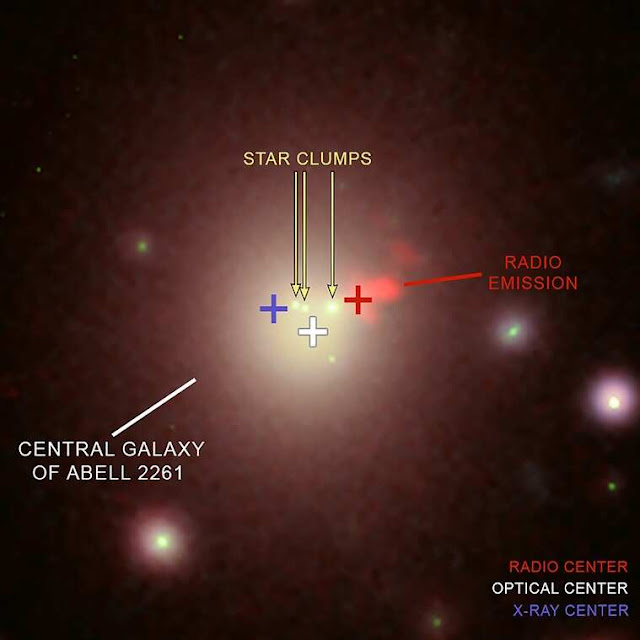Nowadays, new discoveries about cosmos keep coming and some of them are so strange that makes us think that we know nothing about the universe. After the discovery of the mysterious ring cloud in space, again this year there has been a discovery that has surprised scientists. A giant black hole disappeared which has the mass of the equivalent of millions or even billions of suns.
The Cosmos is filled with spiral galaxies. Have you ever wonder what lies the centre of that spiral disk and the answer is a supermassive black hole.
What is a supermassive black hole?
Astronomers believe that A supermassive black hole is a type of black hole whose mass is a million or billions time large than a normal black hole. These black holes only exist in the centre of every galaxy, like the one present in the centre of our milky way galaxy which is called "Sagittarius-A".
Discovery of the strange galaxy
The galaxy called Abell 2261, is quite unique, located about 2.7 billion light-years away from earth, the galaxy lacks supermassive black hole. After discovering such strange galaxy many questions has appeared in mind.
- Where did the black hole disappear?
- Without the black hole in its centre, how can a galaxy maintain its stable form? etc
According to scientists investigating the case, this gigantic black hole in question could be anywhere between 3 billion and 100 billion times the suns mass, given its mass scientist should be able to detect it's presence, but data from NASA's Chandra x-ray observatory and Hubble Space Telescope showed nothing.
Detecting black holes is a tricky business. Black holes don't emit light but scientist rely on indirect means spying on materials like gases that orbit the void, as the gas approaches closer to the black hole the gases get heated up and emit x-rays. Which is then observed by a telescope.
Where did this gigantic black hole go?
Here the mystery gets more interesting, Scientists think that something must have driven the supermassive black hole away. The culprit was likely the marge between the two galaxies, this union may have also forced their respective supermassive black hole to unite resulting in an even massive black hole.
As this happened, the black holes could have emitted gravitation waves which are ripples in space-time. If these waves are more powerful in one direction than the other then it could put out the merged black hole from the galaxy's core. This is called the recoiling black hole but there is a catch.
Recoiling observed between small black holes. We don't know if the giant one the experience the same. There are other theories too- the investigators think that a supermassive black hole might be absent in the Abell galaxy, making it unique.
Alternatively, they also believed that the black hole is present but less active. It might not be consuming enough materials to create detectable x-rays. The study will be published in the general American astronomical society.
With these findings, scientists have narrow down their search. They are placing their bets on the James Webb Telescope, which is due to launch in October 2021, to provide the more definitive answer. It is more sensitive and sophisticated than its predecessor the Hubble telescope.
This is exciting to see, how long scientists take to solve this mystery? Maybe they find something that we had never thought about.






0 Comments